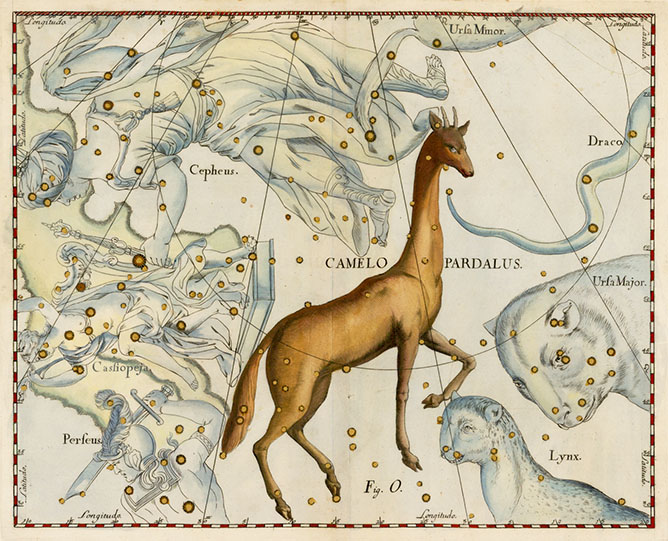Camelopardalis: The Giraffe
cuh-MEL-oh-PAR-duh-liss
| Camelopardalis Constellation Profile | |
|---|---|
| Abbreviation: Cam | Genitive: Camelopardalis |
| Origin: Plancius | Location: Northern Hemisphere |
| Best View (North): Winter | Best View (South): |
| Bordering Constellations: Ursa Minor, Draco, Cepheus, Cassiopeia, Perseus, Auriga, Lynx, Ursa Major | |